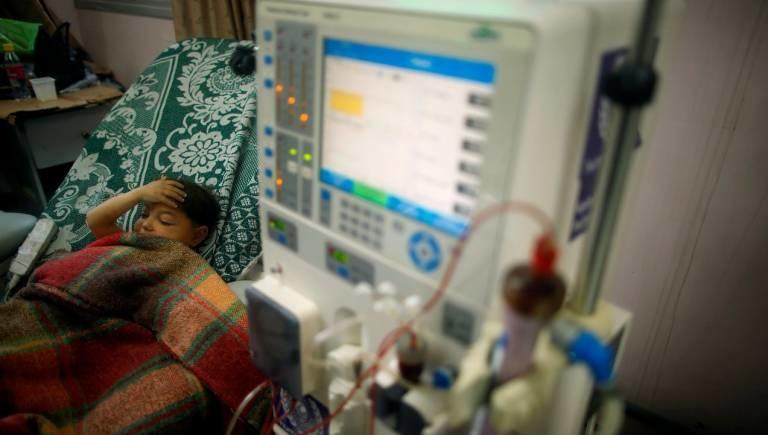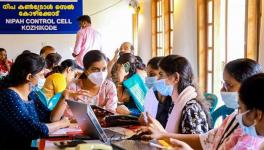India: Health of the Nation’s States

Image Courtesy: Moneycontrol
A recent report, has brought out the diversity within India, as regards challenges to health. The report titled “India: Health of the nation’s states” is based on a study on disease patterns in India and compares the situation in 1990 and 2016. The study was conducted by the Indian Council of Medical Research (ICMR), Public Health Foundation of India (PHFI) and the Institute for Health Metrics and Evaluation. The study provides estimates of the impact of 333 disease conditions and injuries and 84 risk factors for every state of India from 1990 to 2016. The report says that “Although variations in diseases and risk factors have been anticipated between the states of India, this is the first time that a comprehensive compilation of all estimates in a single standardised framework has been made possible for every state in India”.
The report provides an analysis of the burden of different disease conditions and injuries that lead to illness and death as well as those of risk factors that lead to different diseases. The results are quantified in the form of Disability Adjusted Life Years (DALYs) lost by individuals as a result of different disease conditions. This is a standard format for analysis used since the 1990s to assess the “Global Burden of Disease” and is a measure of life years lost in different parts of the world. In order to standardize the results across different countries ‘life years lost’ is measured against an ideal situation – currently taken as the life expectancy of a Japanese female. The technical details in the report have also been published in a scientific paper in the UK based journal, The Lancet.
Epidemiological Transition and Diversity in Trends in States
The report highlights two major findings. First that India has, in the period between 1990-2016, undergone an epidemiological transition – meaning the kinds of illnesses causing the maximum number of deaths and disability (temporary or permanent) has changed. Data regarding Life Years lost in Burden of Disease studies is divided into three broad headings – 1) Communicable (infectious diseases), maternal (pregnancy related), neonatal (related to conditions in very young children), and nutritional diseases (CMNNDs); 2) Non-communicable diseases (NCDs) – which include cardiac and neurological diseases and cancers; and 3) Injuries (due to accidents, conflicts, natural disasters, etc.). The report finds that “off the total disease burden in India measured as DALYs, 61% was due to communicable, maternal, neonatal, and nutritional diseases in 1990, which dropped to 33% in 2016. There was a corresponding increase in the contribution of non-communicable diseases from 30% of the total disease burden in 1990 to 55% in 2016, and of injuries from 9% to 12%”.
Second, the report also finds that this transition has been uneven and has taken place at different points of time in different states over the past 26 years. States such as Kerala, Goa, and Tamil Nadu made the transition earlier than other states, and disease burden caused by NCDs overtook those caused by CMNDDs by the 1990s in these sttaes. At the other end of the spectrum, states such as Bihar, Jharkhand, Uttar Pradesh, and Rajasthan made this transition only a few years back. As a result the latter still have a high burden of infectious diseases while states like Kerala and Tamilnadu have a much higher comparative burden due to NCDs such as cancers, neuorological and cardiac diseases, and kidney diseases.
Poverty is a common determinant of all types of disease
It is important that the implications regarding both these major findings are understood. The epidemiological transition that the report documents and analyses is a global phenomenon. Historically infectious diseases, ill health due to under-nutrition and those related to childbirth and pregnancy, have been the major causes of illness and death. Advances in science and technology and new knowledge provided the tools to minimize the prevalence of these diseases as well as their overall impact on health of individuals. Some of the important advances that have led to a decline in such conditions include medicines, especially antibiotics to cure infectious diseases; vaccination against important killers diseases such as small pox, tetanus, diphtheria and whooping cough; improved agricultural practices that addressed chronic food shortages; improved practices during child birth and pregnancy; etc. These have been accompanied by, in many countries, improvements in living conditions such as better supply of drinking water, sanitation facilities, better housing and reduction in indoor and outdoor pollution, etc. These factors have led to a much reduced impact of CMNDDs, the world over. CMNDDs have also been called ‘diseases of poverty’ and their significant reduction was first seen in the more economically advanced countries.
What is important to note here is not just that we have the knowledge to address most of these diseases of poverty, but that this knowledge is still so unevenly dispersed. Knowledge regarding vaccines, antibiotics, nutrition, safe water supply and sanitation, etc. have been available for several decades. Yet the fact that millions still die from infectious diseases, under nutrition and birth related conditions, shows a mirror to the persistence of inequality both among countries and within countries. Tuberculosis and Malaria were eradicated in Europe several decades back but persists in countries such as India and continue to be major killers. HIV AIDS is a treatable chronic disease in Europe and N.America but continues to be a killer in large parts of the developing world. The reduction in rates of CMNDDs have been too slow in many parts of the world, including in India, and have come too late to save hundreds of millions of lives.
With the relative conquest of infectious and nutritional diseases people started living longer and NCDs, which are essentially degenerative diseases – related to the aging of the body – became more prominent. Thus the relative share of people affected by cardiac diseases, cancers, neurological disorders including age related dementia, diabetes, etc, have become more prominent. These diseases are often, rather mistakenly, termed as ‘life style’ diseases. The term refers to risk factors that promote NCDs related to changing life styles – obesity due to less physical activity and diets with very high sugar content, reduced intake of vegetables and fruits, increased use of tobacco products, etc. Thus while NCDs would have a natural tendency to affect people when they live longer, they are also promoted by risk factors such as those enumerated above. They also get promoted by environmental factors caused by air and water pollution.
To fully make sense of the NCD story it is important to guard against the belief that the rise of NCDs is a sign of growing affluence. In fact many of the risk factors related to NCDs are rooted in poverty and inequality. Industrially processed high sugar and fat containing foods (junk foods) are becoming the staple of poor communities as they are cheaper than freshly cooked nutritious foods. This is already apparent in most industrialized countries where obesity rates are already higher among the poor. We also know that malnourished children are more likely, as adults to develop diabetes and heart disease, especially when they grow up on a high sugar and starch containing diet.
A valuable report provided the right lessons are drawn
What future directions does the “Health of the Nation’s States’ report indicate? It asserts that the major ‘take home’ message is that each state needs to plan differently. There is an even more important message in the data that the report appears loathe to explore fully. As a nation, we are doing poorly on both counts – as regards infectious and nutrition related diseases and as regards the so called ‘lifestyle’ diseases. The report states that per capita disease burden measured as DALY rate has dropped by about a third in India over the past 26 years. The lancet commentary adds that while the disease burden rate (including all types of diseases) in India has improved since 1990, it was 72% higher per person than in Sri Lanka or China in 2016. While the report largely provides comparative data on prevalence of infectious diseases and NCDs, data regarding absolute incidence of disease burden is missing.
A reference to the WHO’s burden of disease database would show that not only is the per capita burden of disease (a measure of the average burden of disease on each individual) in India higher than in China and Sri Lanka, it is significantly higher than all our South Asian neighbors (Nepal, Bangladesh and Sri Lanka) except Pakistan. The report does point to the fact that malnutrition continues to be one of the most important risk factors and that five of the ten individual leading causes of disease burden in India in 2016 include: diarrhoeal diseases, lower respiratory infections, iron-deficiency anaemia, neonatal preterm birth, and tuberculosis – all eminently treatable through functioning health systems. At the same time our increasingly privatized health system, in almost all parts of the country, are failing people who require treatment for the rising epidemic of NCDs. Cancer treatments are unaffordable for most people and treatment of cardiac disorders is pauperizing a whole generation. Thus similar to the gap between knowledge and its use in the case of infectious diseases several decades gap, there is another mismatch that is becoming prominent -- between available knowledge regarding treatment and prevention of NCDs and their actual adoption. Such knowledge is available at a price in the market, reserved for those who can pay.
The report itself is a very valuable addition to knowledge on disease and ill health in India. However, for it to be useful, the right lessons need to be drawn. Unfortunately the Niti Ayog, which anchored the report, has a penchant for missing the wood for the trees.
Get the latest reports & analysis with people's perspective on Protests, movements & deep analytical videos, discussions of the current affairs in your Telegram app. Subscribe to NewsClick's Telegram channel & get Real-Time updates on stories, as they get published on our website.
























